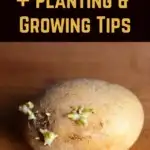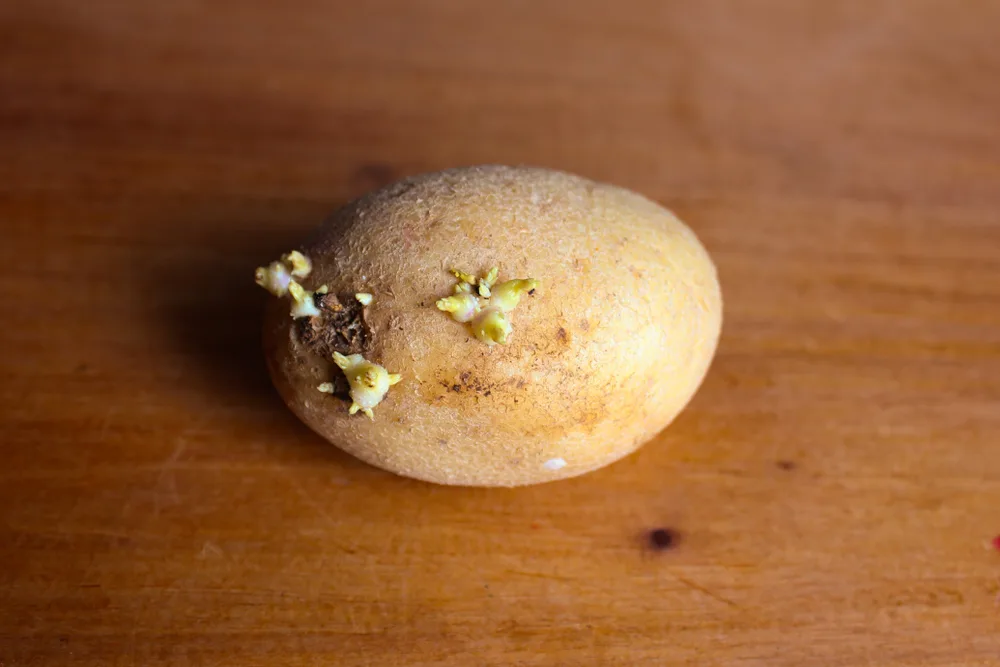
Winter is the time to plan for the growing season ahead. You might be surprised by the number of gardening jobs you have to do.
You’ll be kept busy, even when the days are still very short and very cold.
Along with planting some long-season and early seeds, one of the main jobs early in the year is beginning to chit seed potatoes.
This is one of the simplest and easiest jobs to do early in the year. It can give you a great head-start on the season to come.
Choosing Seed Potatoes
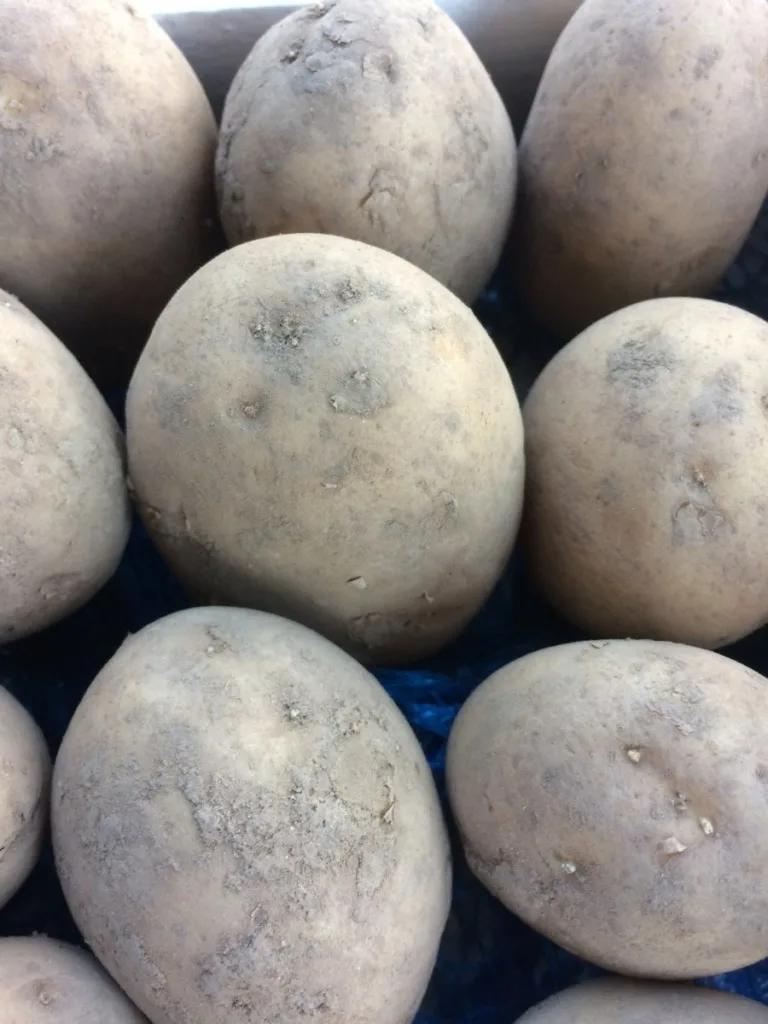
Before you start to chit seed potatoes, you will need to decide which potatoes you will grow. If you do not have potatoes from last year to use as seed potatoes, you will need to order some in.
You can simply use scraps from store-bought potatoes as seed. (As long as the sections you use have ‘eyes’, new potato plants will grow from them.)
But using store-bought potatoes as seed for your next potato harvest might not be the best idea. These potatoes will do if money is scarce. But bought potatoes may harbor diseases, and may not provide the best yield.
For best results, therefore, it is best to buy seed potatoes from a reliable source.
Types of Potato
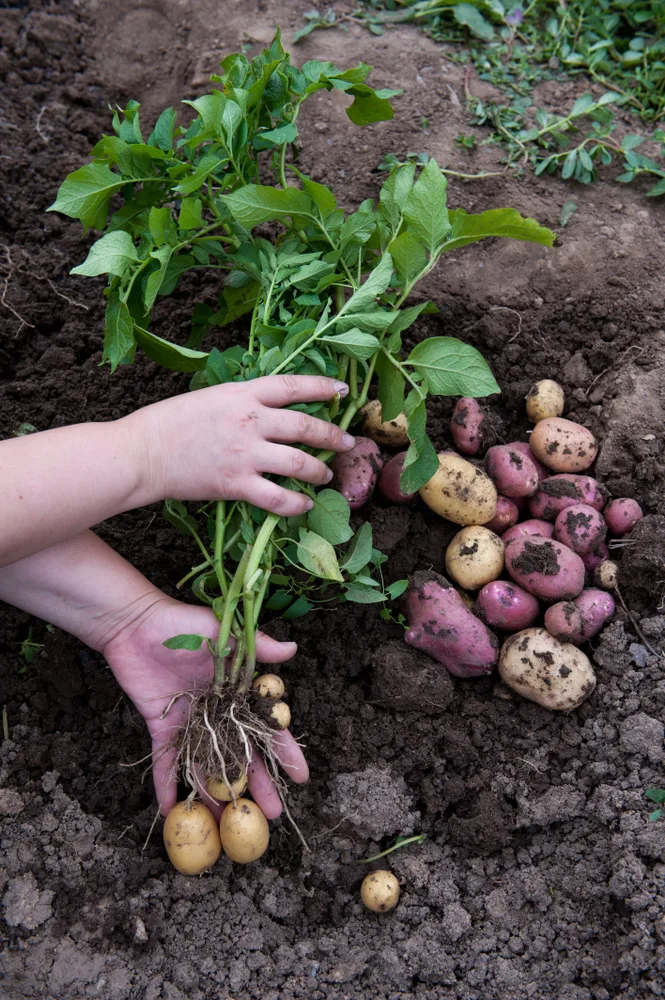
There are three main types of potato planted in the spring. These are:
- First early potatoes.
- Second early potatoes.
- Maincrop potatoes.
(In addition to these three cropping types, there are also ‘Christmas potatoes’, which are planted in summer for a mid-winter harvest. These, however, do not benefit from chitting.)
First early potatoes and second early potatoes are planted in spring – from late February or early March through to late May.
When exactly you plant will depend on where you live, and the climate zone. It will also depend on whether your potatoes will be grown outdoors, or in an undercover growing area.
Both of these types provide small, new potatoes. These are great for a salad or side dish. But they can also be used in a range of other ways.
First earlies are generally harvested after around 10 weeks, and second earlies around 14 weeks from planting.
Maincrop potatoes are also generally planted in the spring, from March through to mid May. These potatoes are ready to harvest from around 20 weeks from planting, but are also often left in the ground and harvested late in the season to store for the following winter.
The large potatoes produced by this type are generally ideal for baking or roasting.
Related Reading: How To Store Homegrown Potatoes So They Last All Winter
Choosing Seed Potato Varieties
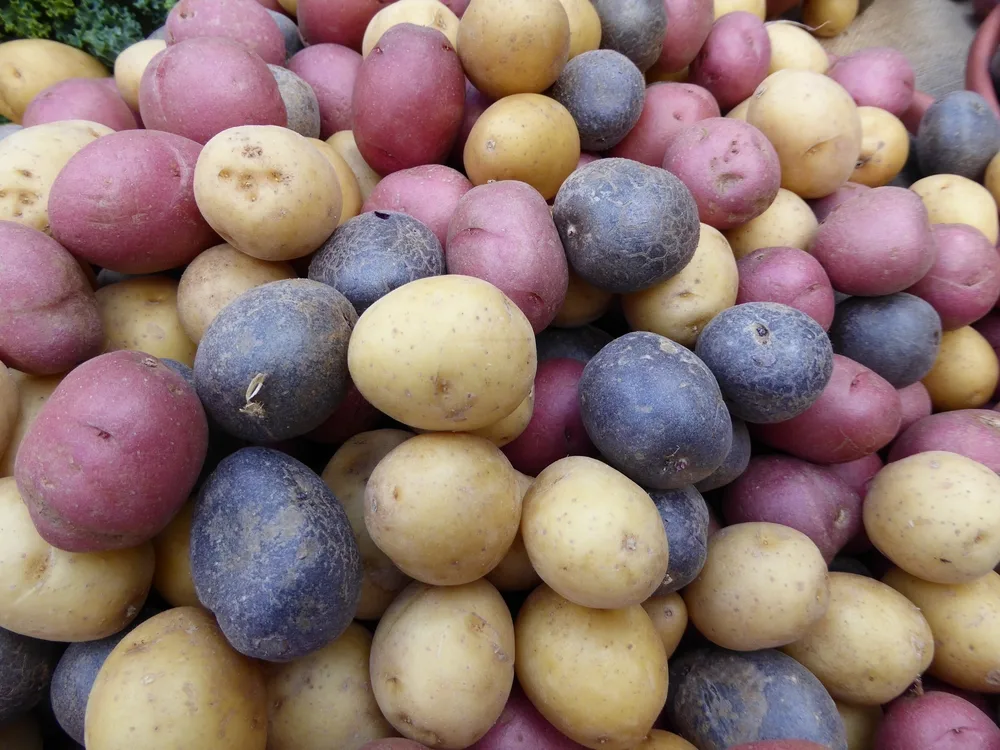
You will have to decide whether you will grow first earlies, second earlies, maincrop potatoes or all three.
But you will also, of course, have to decide which varieties of each type of potato you would like to grow. There are a huge range of potato varieties to choose from.
When choosing a seed potato variety, you should think about:
- Your climate zone and micro-climate conditions on your property.
- The soil type and general growing conditions where you live.
- How much space (and time) is available.
But you should also think carefully about the culinary properties of the potato varieties you are considering. And also about how you like to cook and eat potatoes in your household.
Some varieties are great all-rounders, which can be cooked and used in a range of different ways. Some make better chips or wedges, some mash well, while others are better boiled, steamed or in salads.
Personally, I favour:
For first earlies (which I use for a very early harvest from my polytunnel):
Swift, Rocket, or Maris Bard.
For second earlies (which I sometimes plant in containers and in a smaller growing area):
Maris Peer, Charlotte or Nicola.
For maincrop (in my main annual growing area):
Maris Piper. (This is my favourite multi-purpose potato, which can be used in a range of different ways).
In the US, the main potato varieties are usually grouped according to their appearance. You will find:
- Round white potatoes (creamy in texture and hold their shape well), e.g. Atlantic, Superior.
- Long white potatoes (oval-shaped, firm, creamy texture), e.g. Shepody, Norkotah
- Russet potatoes (starchy and multi-purpose), e.g. Burbank.
- Red potatoes (with red skin and various colors of flesh), e.g. Chieftain, La Rouge.
- Yellow potatoes (with golden color and mild, buttery flavor), e.g. Yukon Gold.
- Purple and Blue Potatoes, e.g. All Blue, Purple Peruvian.
If you are new to growing potatoes, I would recommend choosing a white potato variety for new/ early potatoes, and a standard russet potato for your maincrop.
But you might also want to branch out and grow some more unusual and decorative heritage potato varieties, especially if you have grown potatoes before.
Most potato varieties, wherever you live, will benefit from chitting.
What is Chitting
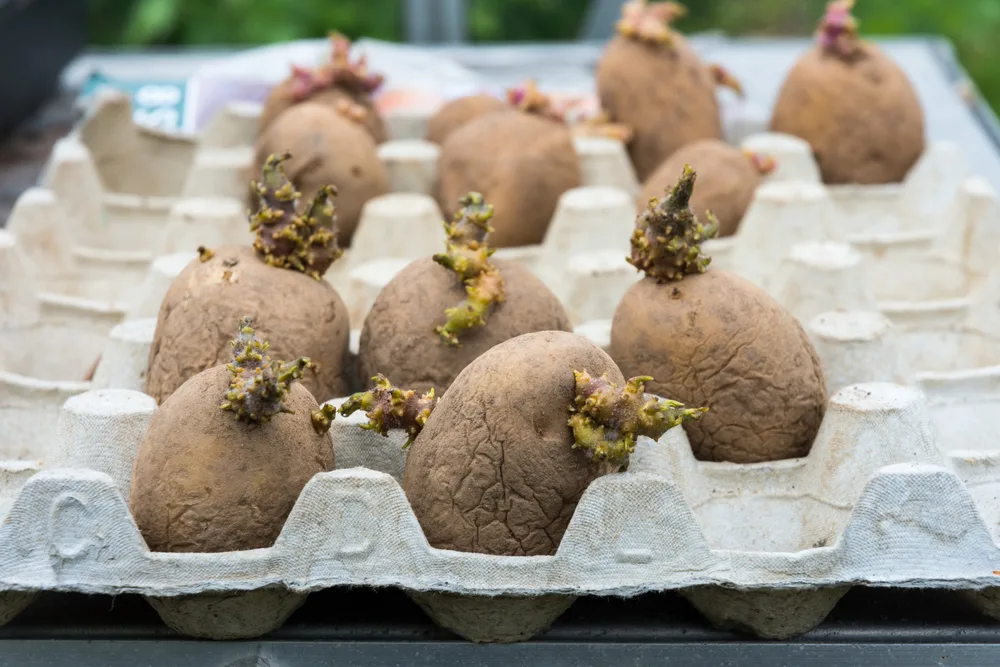
Chitting is simply the name given to a common practice in potato growing. It simply involves leaving potatoes in a cool, sunny spot indoors to sprout before planting.
Allowing your potatoes to sprout green shoots before you plant them will give them a head start and may give you a slightly earlier harvest.
When To Begin Chitting
Chitting is usually done in January or February, around six-eight weeks before you intend to plant your potatoes out. But if planting is delayed for whatever reason, there is no harm in leaving them for a little longer than you intended.
I usually start chitting my seed potatoes in January and plant first earlies in my polytunnel from the beginning of March. I generally chit the potatoes that will be planted outdoors from around the same time. But these will usually only go outside towards the end March or in early April.
Is It Essential To Chit Seed Potatoes?
There is a lot of debate about whether or not chitting potatoes actually makes much difference. It certainly is not absolutely necessary. Commercial growers certainly don’t bother.
It is likely that you will still be able to grow a good crop of potatoes with or without chitting. But since it does not take a huge amount of time or effort, I certainly think it is worth doing for a home grower.
Personally, I do find that chitting makes a difference – particularly when it comes to early yields of new potatoes. I do not have to wait as long to see the satisfying shoots of my new potato plants appearing above the soil.
I can harvest first earlies from my polytunnel very early indeed. This makes space for summer crops to go in when the weather is well and truly warmed in July. Or lets me plant brassicas to get ready for next winter.
How To Chit Seed Potatoes
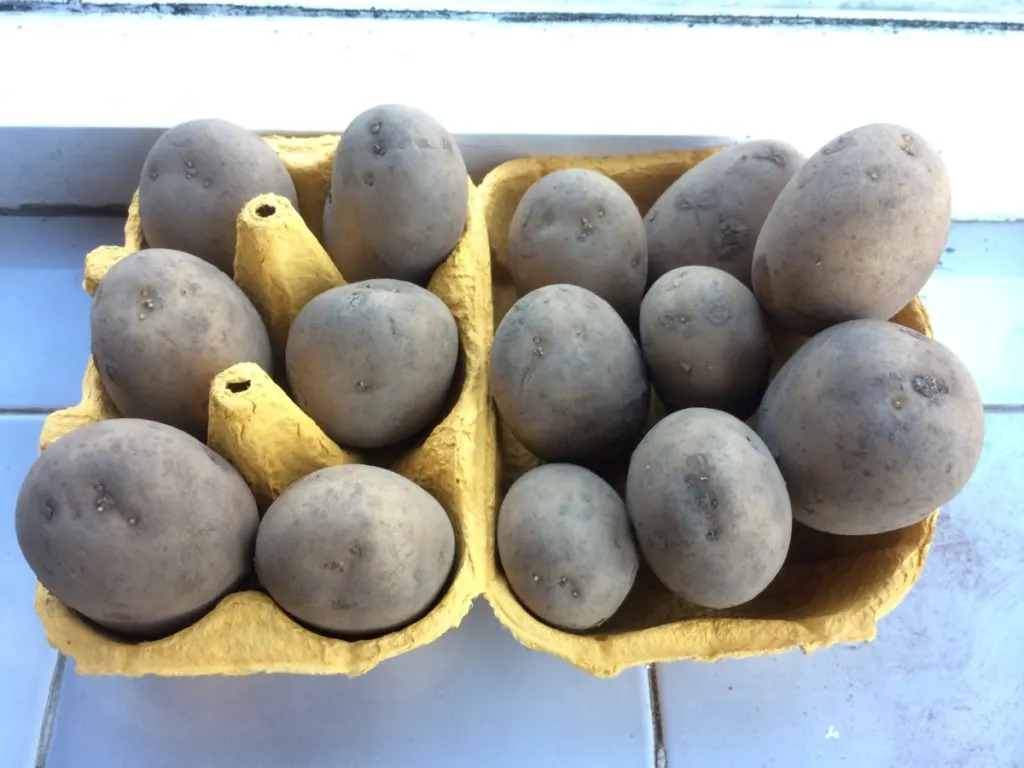
To chit whichever seed potatoes you have chosen:
- Find a cool, sunny windowsill or another suitable spot to place your seed potatoes.
- Place egg boxes, cardboard trays or other suitable containers in that location.
- Take your seed potatoes, and place each one with the rounded, blunt end upwards. On this end you will see a number of dimples, known as ‘eyes’. Shoots will emerge from these ‘eyes’.
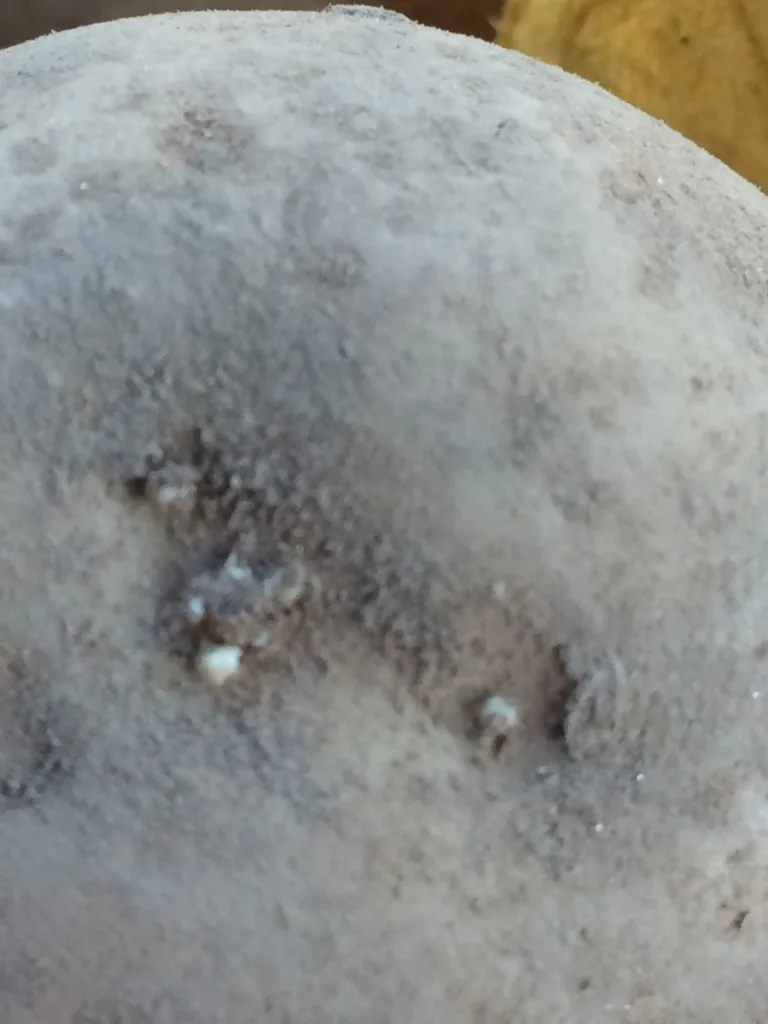
- Make sure that the eyes you want to sprout are all getting plenty of natural light.
- Now, simply leave your potatoes to sprout. Ideally, you want shoots that are around 1-2.5cm long come planting time.

Planting Out Chitted Seed Potatoes
By planting time, you should have had time to prepare your growing areas.
Usually, you will create a trench and plant potatoes in the ground. But you can also place them in raised beds (such as a Hugelkultur bed) or containers.
The depth at which potatoes should be planted will depend on the variety or varieties you are growing. Spacing will also depend on the type and variety of potato.
Take care when handling your chitted potatoes. Make sure you do not knock off or damage the new shoots.
Place them into the ground, or into your containers gently, with the shoots pointing upwards.
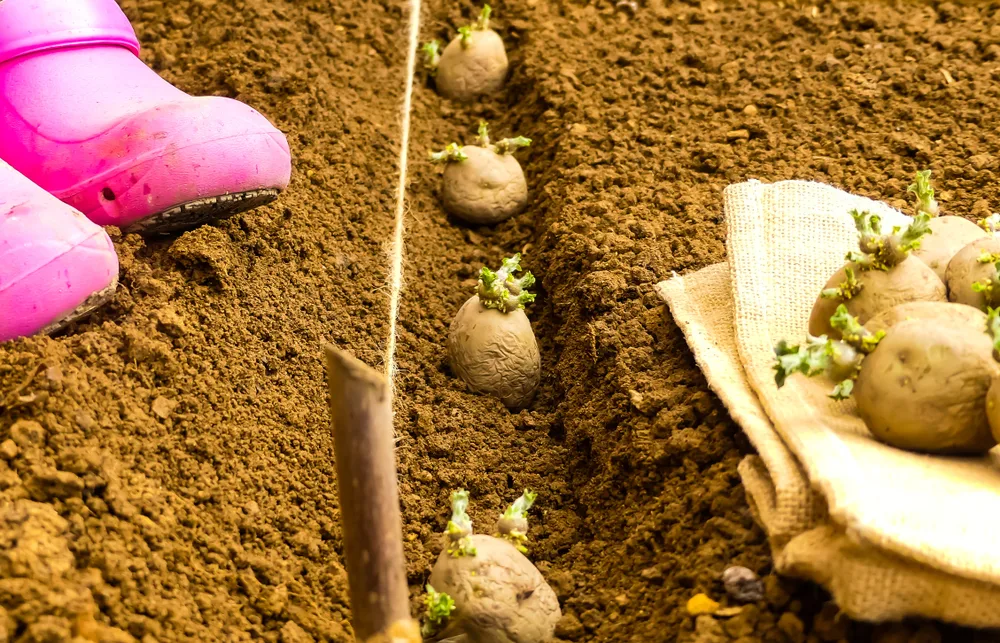
Some people recommend brushing off extra shoots at planting – but this is not necessary. Space your potatoes, then cover them lightly with soil.
Caring for Your Potatoes
Give your potatoes a good watering if the weather has been dry. At this stage, I like to feed my potatoes with a comfrey liquid feed to give them a good start and boost fertility.
Alternatively, some gardeners like to plant their potatoes with comfrey leaves for a fertility boost, as shown below.
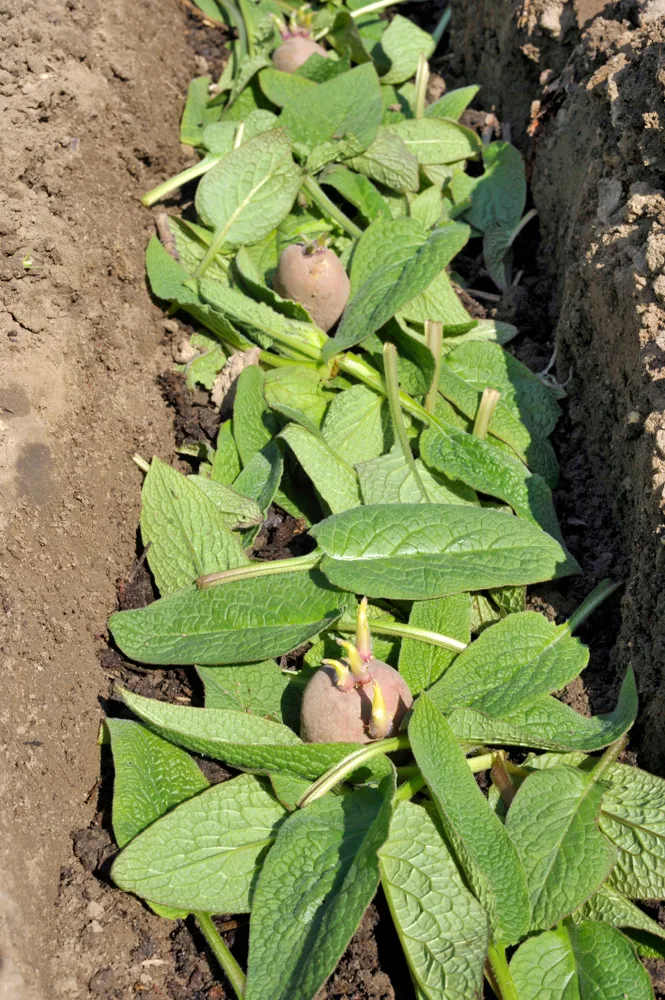
When the shoots appear above ground level, earth up your potatoes. Or do as I do and add a heavy mulch of well-rotted compost around your plants so that the shoots are just buried again.
Continue to ‘earth up’ your potatoes at regular intervals. By the end of each season there will be a mound around each plant or along each row that is around 15cm high.
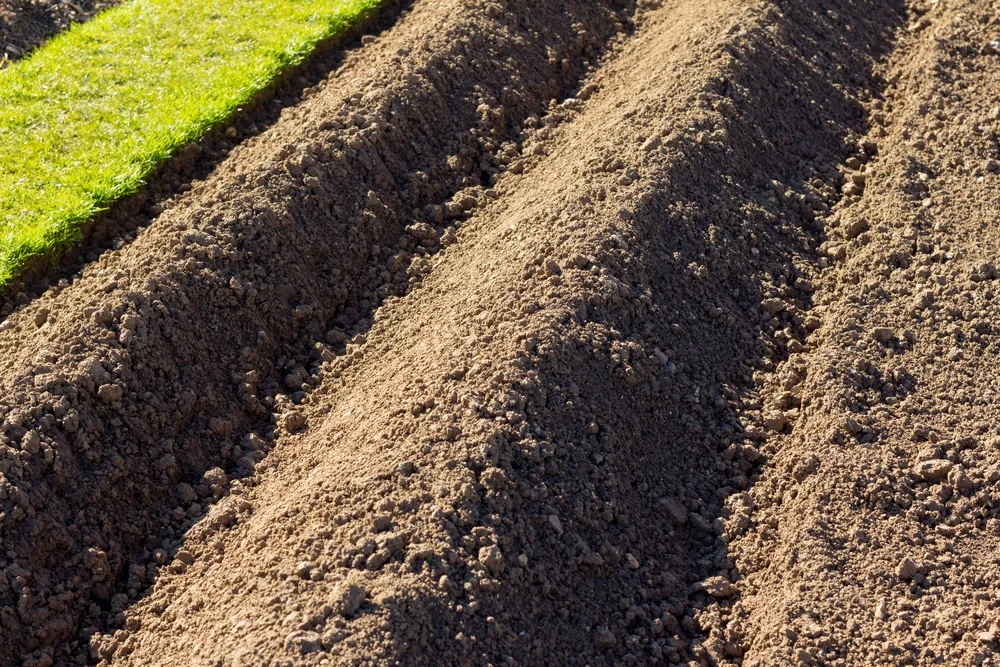
Once the potato plants are well above these mounds, and growing strong, mulch around them to retain moisture and reduce weeds.
I like to use comfrey leaves or seaweed for this purpose. Water well throughout the summer months, especially when rainfall levels are low.
Harvesting Potatoes
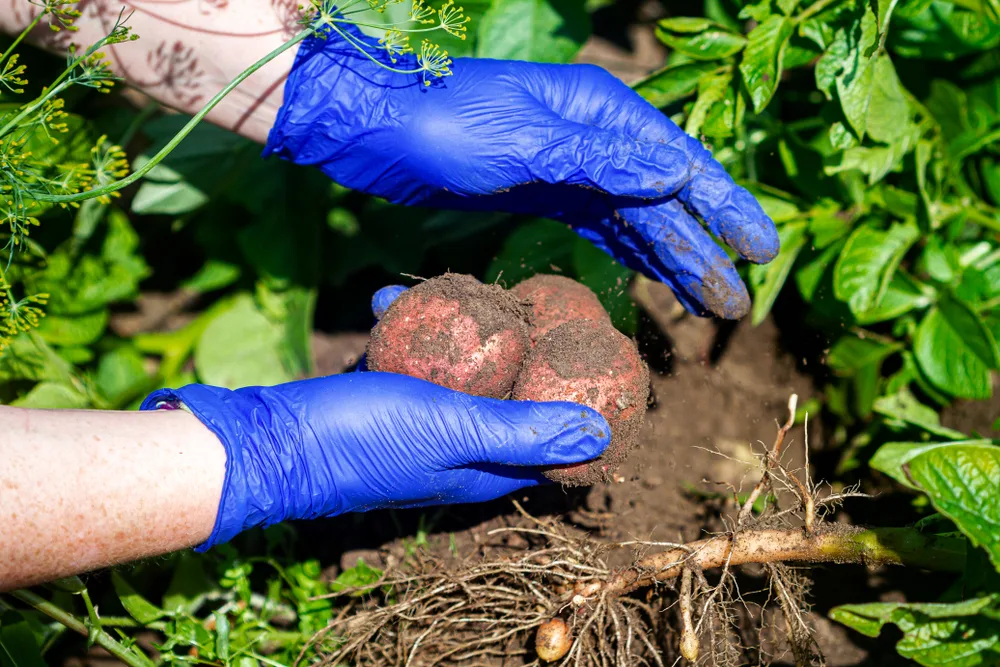
First and second early potatoes can be lifted and eaten as soon as they are large enough to be of use.
Gently reach around under the ground near one of your plants before lifting, and find a tuber. You will be able to see whether they are large enough to harvest before lifting your plants.
Early potatoes are generally ready when growth is still fresh and green, and the first flowers are just beginning to open.
Maincrop potatoes will generally be left in the ground much longer. I usually harvest in September, or early October.
Around two weeks before you harvest your maincrop potatoes, cut off all growth at ground level. This will cause the tubers’ skin to thicken. This makes them less prone to damage, and easier to store for winter use.
Saving Seed Potatoes For Next Year
You might want to play it safe and buy in new seed potatoes each year.
But for sustainable home growing, you might want to think about saving seed potatoes.
If you have grown an interesting heirloom potato variety, it could be great to save some to replant the following spring.
To save your own seed potatoes:
- Select some good quality, healthy and whole tubers from your harvest.
- Brush off the soil, but do not wash them.
- Put potatoes in the light for a short while to let them green a little. (This encourages dormancy.)
- Place the potatoes in a cool, dry, dark place, kept at a constant temperature of around 50 degrees Fahrenheit. Make sure there is good air flow around your seed potatoes.
- The following year, take these tubers from storage and place them in a cool, bright place to chit. And start the process all over again.
Pin This To Save For Later
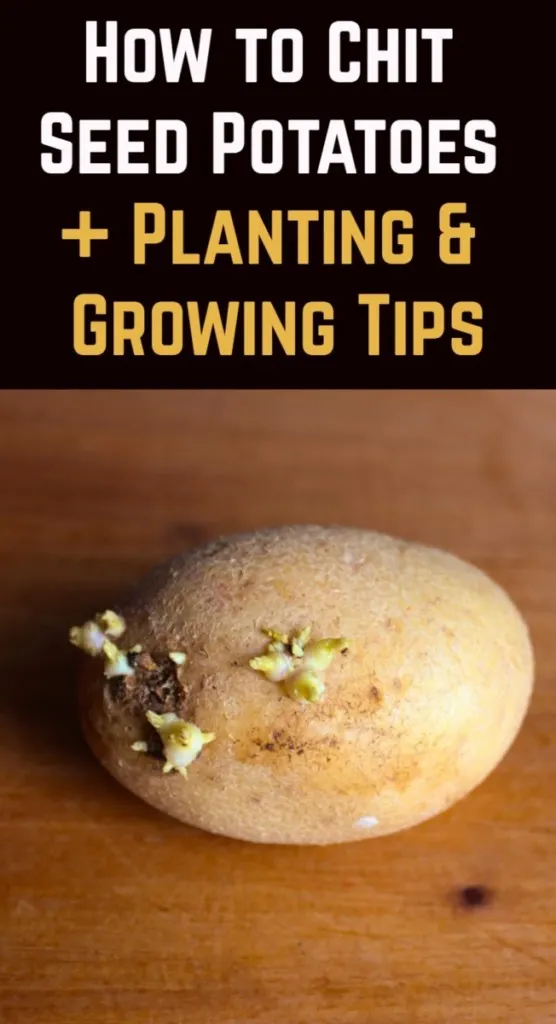

Get the famous Rural Sprout newsletter delivered to your inbox.
Including Sunday ramblings from our editor, Tracey, as well as “What’s Up Wednesday” our roundup of what’s in season and new article updates and alerts.


